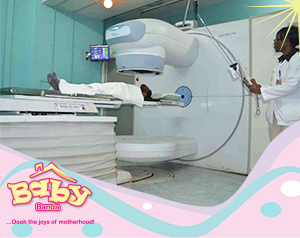Cancer is a dreaded disease with many people in Kenya considering the diagnosis as a death sentence. However, with the availability of treatment locally and abroad many people have gone into remission and lived cancer-free for years. It is for this reason that younger patients diagnosed with cancer or those in childbearing age should not lose hope of living a fulfilled life.
Generally, treatment options available for various types of cancer are often intense and involve taking a lot of chemotherapy drugs that affect the normal functioning of the body. Fertility preservation for cancer patients is done to ensure that they remain fertile throughout the treatment period and beyond. In most cases, preservation is open for women of different age groups.
Although the type of treatment for cancer may depend on the type and severity of the condition, the two most common ones are chemotherapy and radiation. If your cancer is being treated using either of the two, below are options available to help you preserve fertility.
1. Chemotherapy
• Embryo freezing- This is considered the most successful method for women that want to preserve their fertility. The process, which is referred to as in vitro fertilization (IVF) involves the removal of mature eggs from the ovaries of the woman which are then fertilized in a laboratory. When IVF is successful, embryos are frozen so that they can be used once the cancer treatment is done. This option is ideal for married women but can also be used by single women that have donor sperm.
• Egg freezing- This method of fertility preservation is ideal for single women that have no partner or donor sperm. It involves the removal of mature eggs that have not been fertilized and then freezing them for use later. After treatment, if the woman wants to get pregnant, the eggs are thawed and fertilized before being implanted back in their uterus.
2. Radiation
• Ovarian shielding- Women that have to undergo radiation on their whole body are ideal candidates for this method of fertility preservation. For the ovaries to be protected, a shield is used to cover the lower abdomen of the patient so that the radiation does not directly come into contact with their ovaries. In most cases, the shielding preserves the functionality of the ovaries throughout the treatment period but more studies are being done to confirm if it is safe to use.
• Ovarian transposition- This is an outpatient surgery that involves moving a woman’s ovaries away from the area in which radiation treatment will be targeting. In most cases, the ovaries are moved to the centre or above the pelvic area so that they do not come into contact with radiation. The success of this procedure is measured by the resuming of menstrual periods after cancer treatment is done, which is often the case for many women.
Finally, the procedures used to preserve fertility vary from one woman to another and in some cases, your doctor will use what would work best for you. It is good to note that at times the treatment may not work as expected, making it important to understand the risks and the possible outcomes of procedures beforehand. If married, include your partner in discussions with your doctor so that you can make the final decision together.














